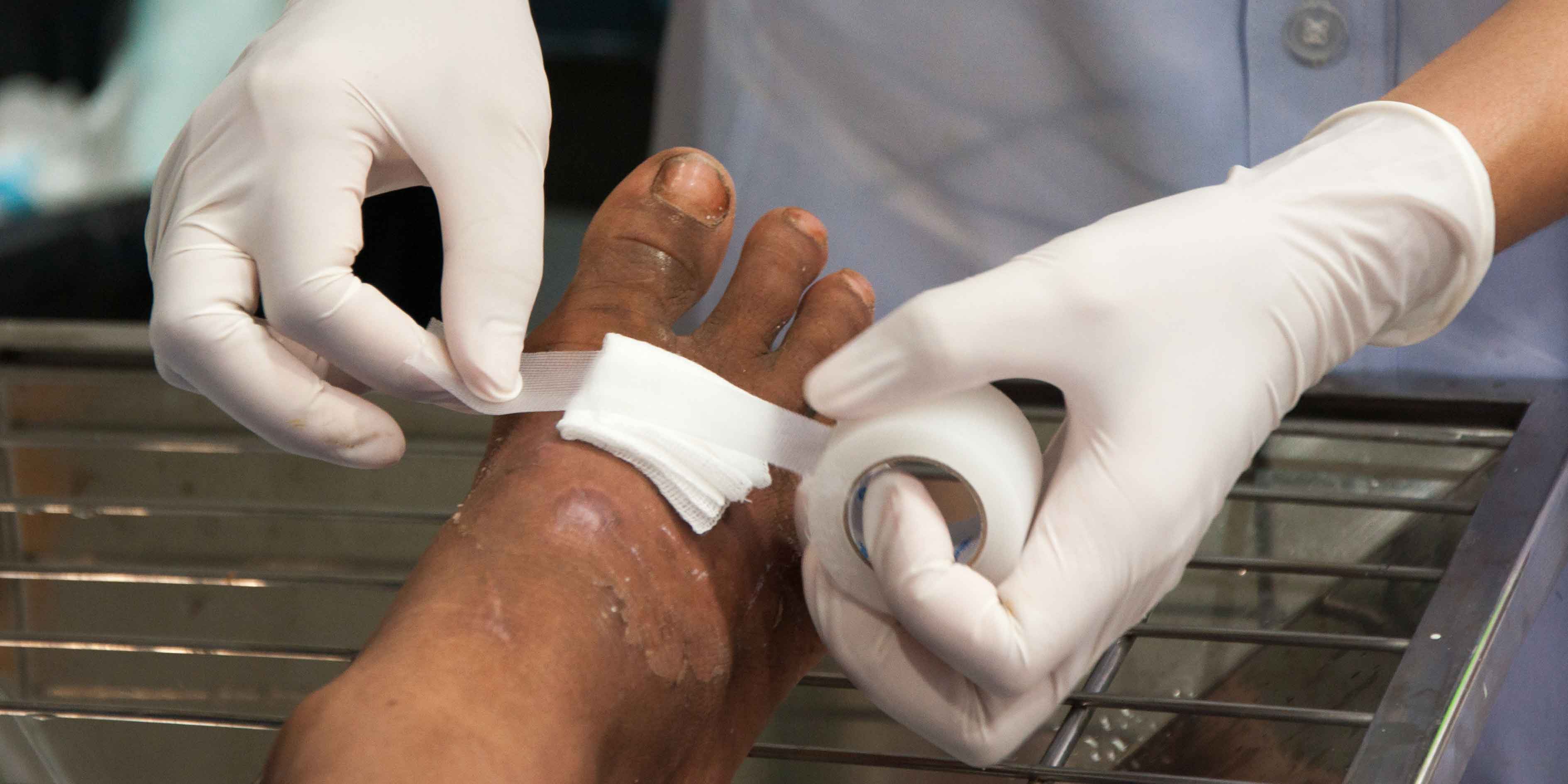Let’s take a one question wound care quiz.
What is more important for wound dressing change frequency?
- Expert application of a dressing
- Frequency of the dressing change
The correct answer is the frequency. Now let’s talk about why.
I do not want to take away from the importance of properly applying dressings because that certainly has its own merits. But when it comes down to it, the frequency wins hands down.
As we teach in class, wound healing is a dynamic process. As the wound progresses through the phases of healing, all kinds of cellular activity is happening.
From the neutrophils and macrophages to the growth factors and fibroblasts, each phase has a job to do for the wound to move to the next phase and ultimately close.
Cellular activity can be affected by the temperature in the wound tissue. As wound care clinicians, our role is to assist the chronic wound through each phase, removing barriers and supporting an optimal healing environment.
Primary phases of wound care
Let’s look at the two primary phases that require our assistance and the role of wound dressing change frequency.
Unlike acute wounds, chronic wounds are well past the hemostasis phase and into the inflammatory phase by the time we first assess them.
During this phase, the main function is to remove the necrotic tissue, bioburden and other debris that prevents the wound from healing effectively.
Because of the amount of damaged tissue, there are many endotoxins being released into the wound, which can impair the activity of the fibroblasts and keratinocytes.
Therefore, the wound clinician needs to intervene with more effective debridement options than autolysis.
The approach of debridement should be one of speed and efficiency, trying to get the wound clean in as little time as possible.
Since healing doesn’t occur during inflammation, the increased frequency of dressings changes while using sharp, enzymatic, mechanical or chemical debridement are inconsequential at this point.
The goal is to prepare the wound to heal first.
Wound dressing change frequency promotes healing
Once the wound is cleaned, we need to shift our focus to practices that promote a healing environment.
This is where decreasing wound dressing change frequency and dressing type becomes a priority.
Carefully selecting products that can insulate the wound and reduce the frequency of changes will make a significant impact.
Studies show the simple procedure of changing a dressing can decrease the temperature and temporarily stop healing requiring up to four hours for healing to resume, according to the Journal of Wound Care.
Evidence has demonstrated that the minimal wound temperature for cellular activity is 91.4 degrees Fahrenheit, according to the Acute and Chronic Wounds: Current Management Concepts (5th Edition). Therefore, dressing type and wound dressing change frequency can have a huge effect.
To optimize healing, we need to maximally changing dressings three times per week, but ideally one to two times a week.
In a clean wound, the main factor affecting frequency will be exudate. However, there are many excellent dressings available to manage exudate, and achieving the reduced frequencies should not be an issue.
Studies also show that semi-permeable dressings keep the wounds warmer and the thicker dressings insulate better.
Proper wound care principles
Modern evidence-based wound care and logic dictate a number of key principles to be followed for more successful outcomes.
- It is acceptable to do more frequent dressing changes during the inflammatory phase, but the impetus needs to be decreasing this phase to as short a period of time as possible.
- When choosing wound dressing change frequency to support optimal healing, the motto of “less is more” should be our modus operandi.
- Realize that wound healing is a very dynamic process and as the wound changes so should our treatment using solid evidence-based approaches.
The days of “we have always done it this way” and continuing to do the same treatments throughout the process is antiquated.
Be a wound champion who practices like an expert. Leave the status quo approaches behind.
Take our course on Skin and Wound Management.
What do you think?

